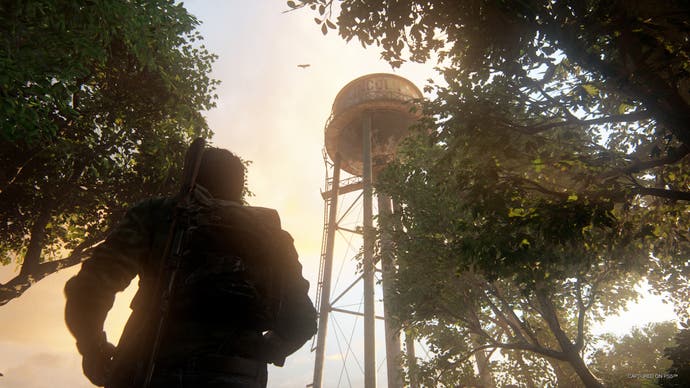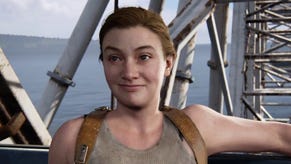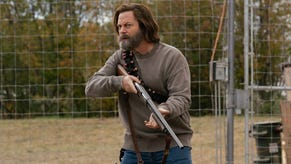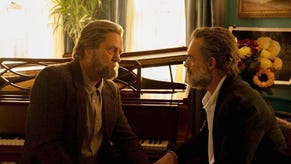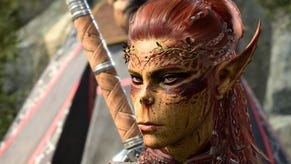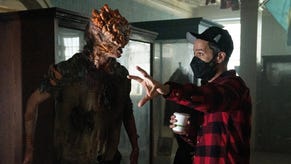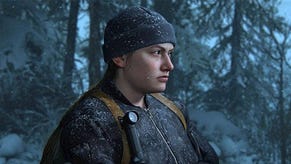The Last of Us Part 1 developers on the journey to PlayStation 5 and the endless promise of accessibility
"We're all at this very early frontier of what is possible here."
Nine years ago, The Last of Us was first released for the PlayStation 3. Here, we met Joel, Ellie and a whole cast of characters making their way in a world riddled with danger and aggression. The game tells a sad story, but also a multi-faceted one. Back in 2013, The Last of Us left its players with a message that hope, humour and unconditional love could still exist, even in a world divided by fear.
Now, the game is being released once more, remade from the ground up for the PlayStation 5. Ahead of this release, I sat down with developers Matthew Gallant and Shaun Escayg to talk about the new accessibility features coming to The Last of Us Part 1, and the business of making what they openly describe as "a love letter" to the game's fans.
Please note, there will be spoilers for The Last of Us Part 1 in what follows.
Escayg, whose previous works include Uncharted: The Lost Legacy, states that Naughty Dog wanted to offer the chance for "our existing fans and new fans to have the ability to play Part 1 and Part 2, continuously, without large gaps in technology or visual fidelity" with this upcoming release.
He continues, "a lot of how we approached this game, from the get-go was as a love letter to our fans, to the franchise, and to ourselves as developers. We literally sat down and made very deliberate choices on how to heighten the experience, [and] enhance it, but retain some of the original core experience of this game. It's arguably one of the best games ever made [and] we did not want to mess with that. But we did want to sort of reimagine spaces that were limited by our tech [during the development of the original game]."
However, he sees the new accessibility options as a key factor that will make this version of Part 1 so important to the gaming community today.
"This is a game we love and the more people that we can have play [it] and help us, and give us feedback - [that is] a pillar of our studio," he says. "We're always looking at, 'how do we get more engagement in our franchises and have people love and play and experience, our narratives, our stories, our characters?' [Accessibility is] gonna be a constant push for Naughty Dog."
When The Last of Us was originally released, accessibility was not as much a focus for Naughty Dog as it is now. This means that for the PS5 version, the team had to retrospectively add in a host of new features to a story that has already been told.
A lot of the groundwork for this had been laid out thanks to Part 2, however. "One of the benefits of building Last of Us Part 1 in The Last of Us Part 2's engine [is] we got to leverage [all of the tech we've been developing] right off the bat and put that into The Last of Us Part 1," says Gallant, who worked on the original game as a designer, before stepping into the director's role.
"And thankfully, because they're both games in the same series, they share a lot of mechanics in terms of how you aim, or in terms of how you traverse," he continues. "There's a lot of commonalities there, so a lot of that just fitted really, really seamlessly in The Last of Us Part 1 on the PS5."
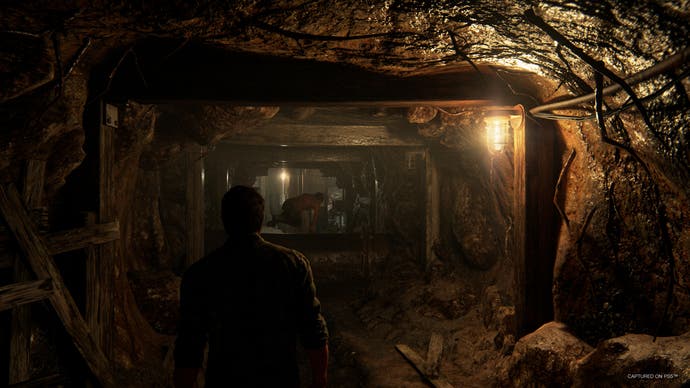
But what about those areas of the game that did not share a commonality with Part 2? Here, the developers decided that, while they could not use the same tools as Part 2, they could still use the lessons they had learned when developing the sequel.
"There was a concern right off the bat that 'Oh, is there going to be some unique mechanics or situations that our existing set of accessibility features is not going to provide sufficient guidance for'," Gallant admits. He highlights the gameplay scenarios included in Part 1's DLC, Left Behind, that sees Ellie and her friend Riley playing on an arcade machine and taking photos together in a booth.
"[The development team] were immediately concerned that they might present unique challenges in some way," he tells me.
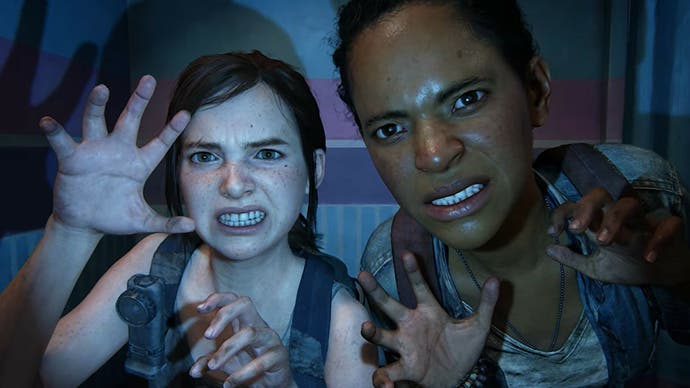
"[So], the very first thing we did is we looked at those sequences and thought, 'Okay, what barriers would be present here for a player who can't see? What barriers are present here for a player that can't hear, or has motor accessibility needs?'" Gallant continues. "And then kind of speculating based on that, we go in and make adjustments to provide options, we think about how text-to-speech can be integrated in the sequence, that sort of thing."
Several accessibility consultants were brought in to play through Left Behind's arcade sequence, including blind player Brandon Cole, who also worked as a consultant on Part 2.
Cole's feedback proved invaluable. He told Naughty Dog that, in this sequence's early days, the text-to-speech function was "too prolix". Gallant recalls working with Cole to ensure that this function instead provided "short and sweet descriptions" that flowed more naturally with the gameplay sequence on the screen.
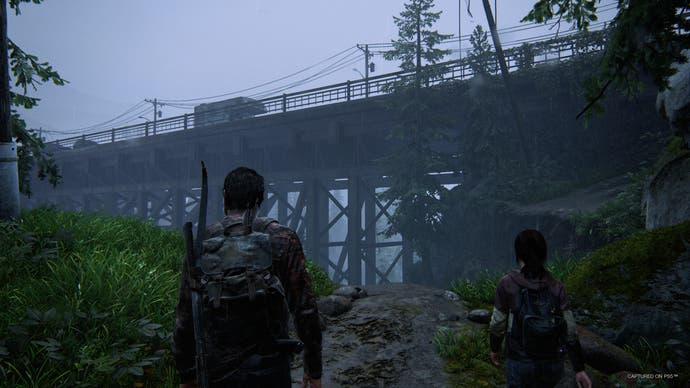
"Historically it has always been something that we've found a lot of benefit from," says Gallant. "We don't want these sequences to just be barrier free - that's kind of the floor. We want the sequences to be amazing."
Even though the catalogue of accessibility features included within The Last of Us Part 1 will finally open the game up to those who have been unable to experience it before, the accessibility consultants were insistent on maintaining an element of challenge throughout.
"That's something that I personally found over and over is that players with accessibility needs, they want a challenge," Gallant says, recalling work on Part 2. "They want to play this game on Grounded... they want to get themselves constrained. They're playing permadeath, they're playing all of the ways that everyone else scales their experience up or down to give themselves more [of a] challenge."
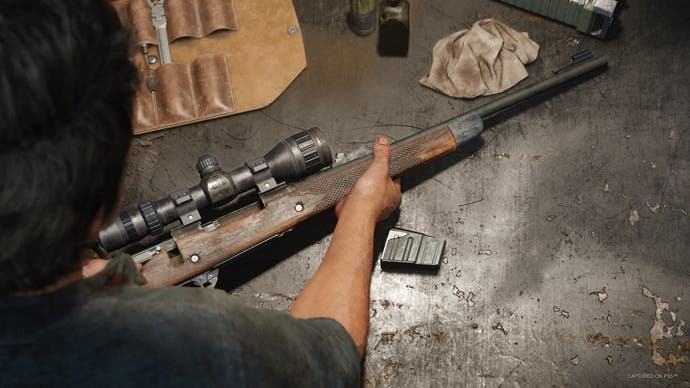
There's a crucial element to all of this, however. "They want to engage with the gameplay [and] they want to struggle," says Gallant. "But to struggle against the enemies, to struggle against the challenge in the game - not struggle against their controller, not to struggle against our design choices."
One example of this is the game's invisibility feature, which allows players to stealth their way through areas with a certain degree of ease, but it will immediately slow down Joel's movements. It's a tool for players to use when it's needed.
"As we were thinking about that functionality, and testing this with our accessibility consultants... We [knew we] wanted to make this gameplay experience accessible for blind players,"Gallant explains. "But they didn't want a cheat code, so to speak. They didn't want to just be able to run around and sprint around through layouts being invisible. That wasn't really what they were looking for. What they were looking for was to have this stealth gameplay that sighted players are getting to have, but their own version of that."

Both Gallant and Escayg feel the industry is currently at an exciting time in terms of accessibility in games, and both remark on how encouraging it is to see other studios also embracing these sorts of features within their games.
"I feel like we're all at this very early frontier of what is possible here," says Gallant. "And it's nothing but potential out there. So I'm thrilled to see every other studio that is pushing [for more accessibility in games]. I guess when I look at the [industry's] landscape, I'm just cheering everyone else on... I almost feel it's a win for everyone. Every time I see someone else doing something cool. I'm like, 'Yes, everyone's going to benefit from that'."
"I couldn't agree more," Escayg says. "The hope is that it becomes common, that it becomes that we can all learn off of each other and build games that everyone can experience. That is the ultimate goal."While neither Gallant or Escayg could divulge how the PS5's features for The Last of Us Part 1 will translate across to its upcoming PC release, both were keen to stress that accessibility is always a forefront of their work, regardless of game or platform.

But how does the team at Naughty Dog gauge whether their endeavours with accessibility have been a success?
"To some degree, we do have telemetry from a playthrough," says Gallant. "But I wouldn't say that that's something that we really, really dig into [or] really, really sweat about. What we care about a lot more is, who did this open up the experience for? Who's excited that they get to play this game that they would have otherwise been excluded from? What new audience are we building up for?"
"I don't think we view accessibility features, or any part of our game, as a sort of 'success or failure', but almost as a constant work in progress," adds Escayg. "We're always pushing, will always be developing, will always try to find more and more ways to build on what we've learned and improve it and get feedback from our fans, and continually push those boundaries."
Despite this push for greater inclusion, there are some toxic parts of the internet that see added accessibility features in games as unnecessary. To this, Gallant and Escayg say they listen to feedback from the community, but it will never stand in their way of making their games as accessible as possible.
"All feedback is valid. Even if the suggestion isn't necessarily the solution," Escayg argues. "We should always be listening to our fans, and working from that, and from that source. It's really sifting through where the true concerns are, and ultimately using everything, every avenue we've got available to us, to make and create better games. That's the goal, period."
"I think accessibility, when done properly, is completely orthogonal to difficulty... I want [The Last of Us Part 1] to be accessible to everyone," Gallant adds.
While there has been praise for the upcoming accessibility features in The Last of Us Part 1, many have complained about its price tag. The base game alone will set you back £70, with other more expensive editions also available.
"The Last of Us Part one is a game that is going to stand toe to toe with any other game that comes out this year," says Gallant. "It is a full PlayStation 5 game developed with all our latest and greatest engine technology. [It has been] developed with the furthest that we're able to push fidelity and graphics and framerate and combat and AI - just every dimension that we could, we wanted to push that as far forward as possible and make this a version of the game that is just seamless with anything else that's coming out on modern consoles.
"So, from our perspective, this is a PS5 game. This is a game that was remade and [that] speaks to the price."
The Last of Us Part 1 releases Friday, 2nd September for the PlayStation 5.
